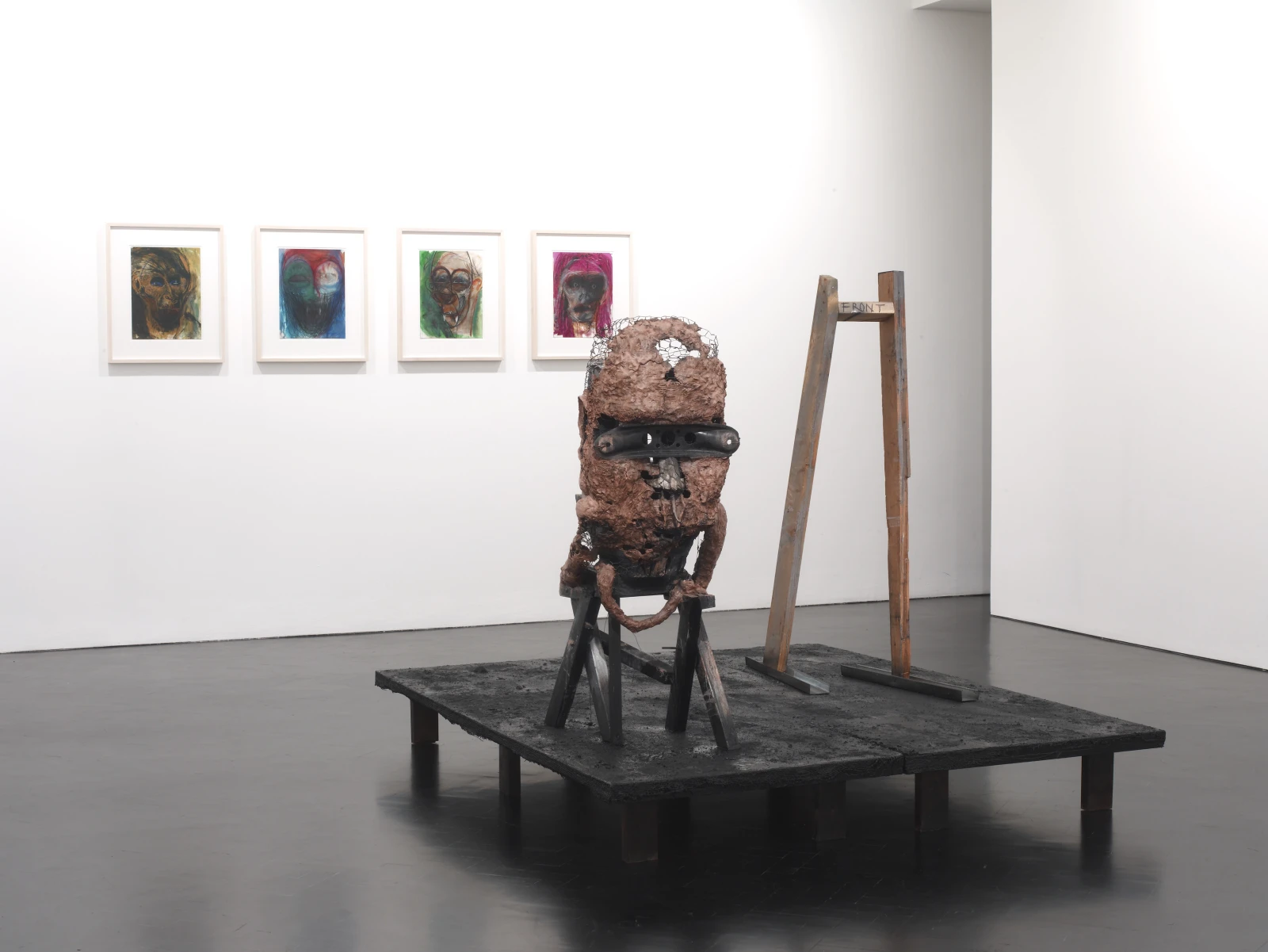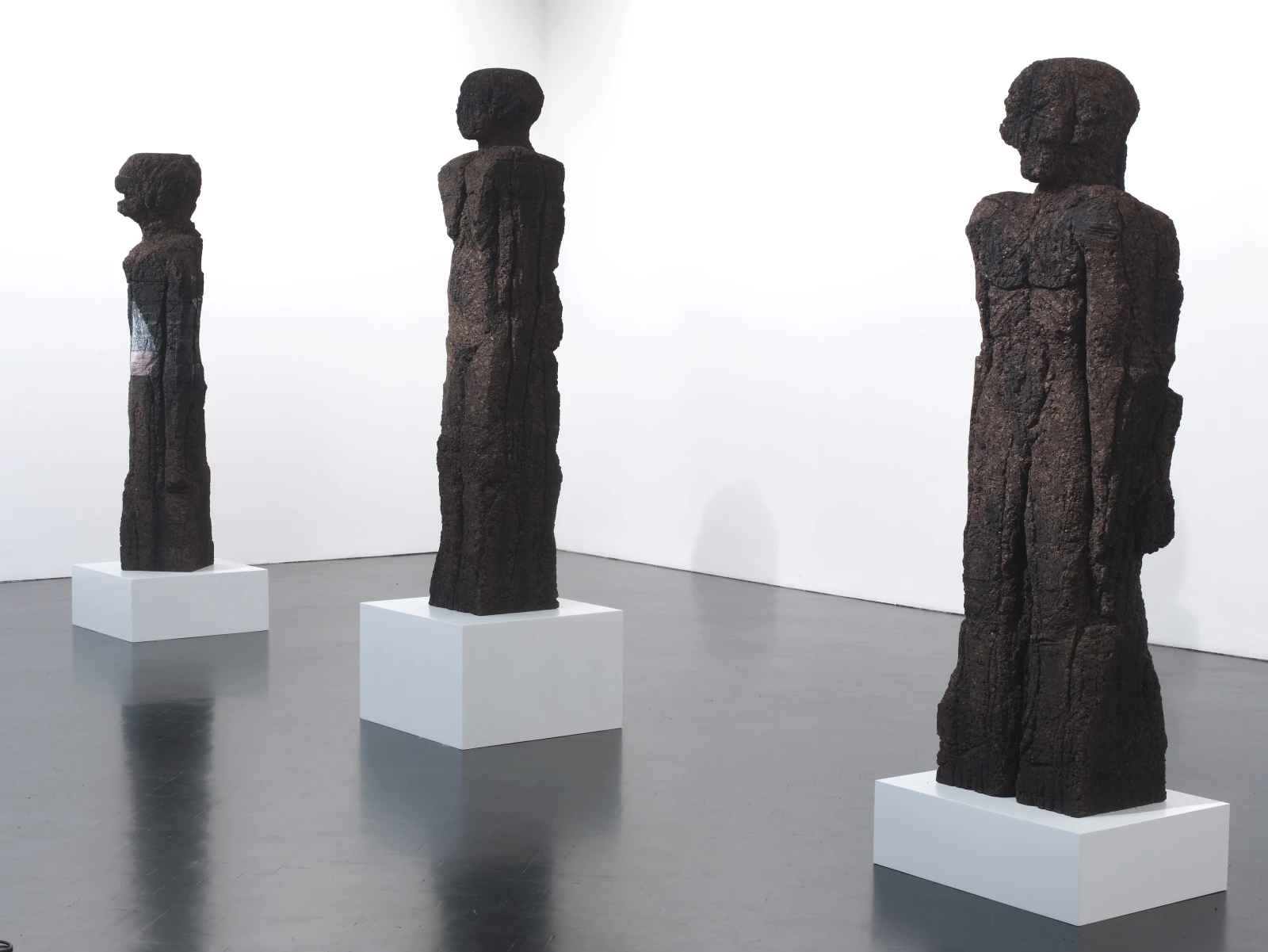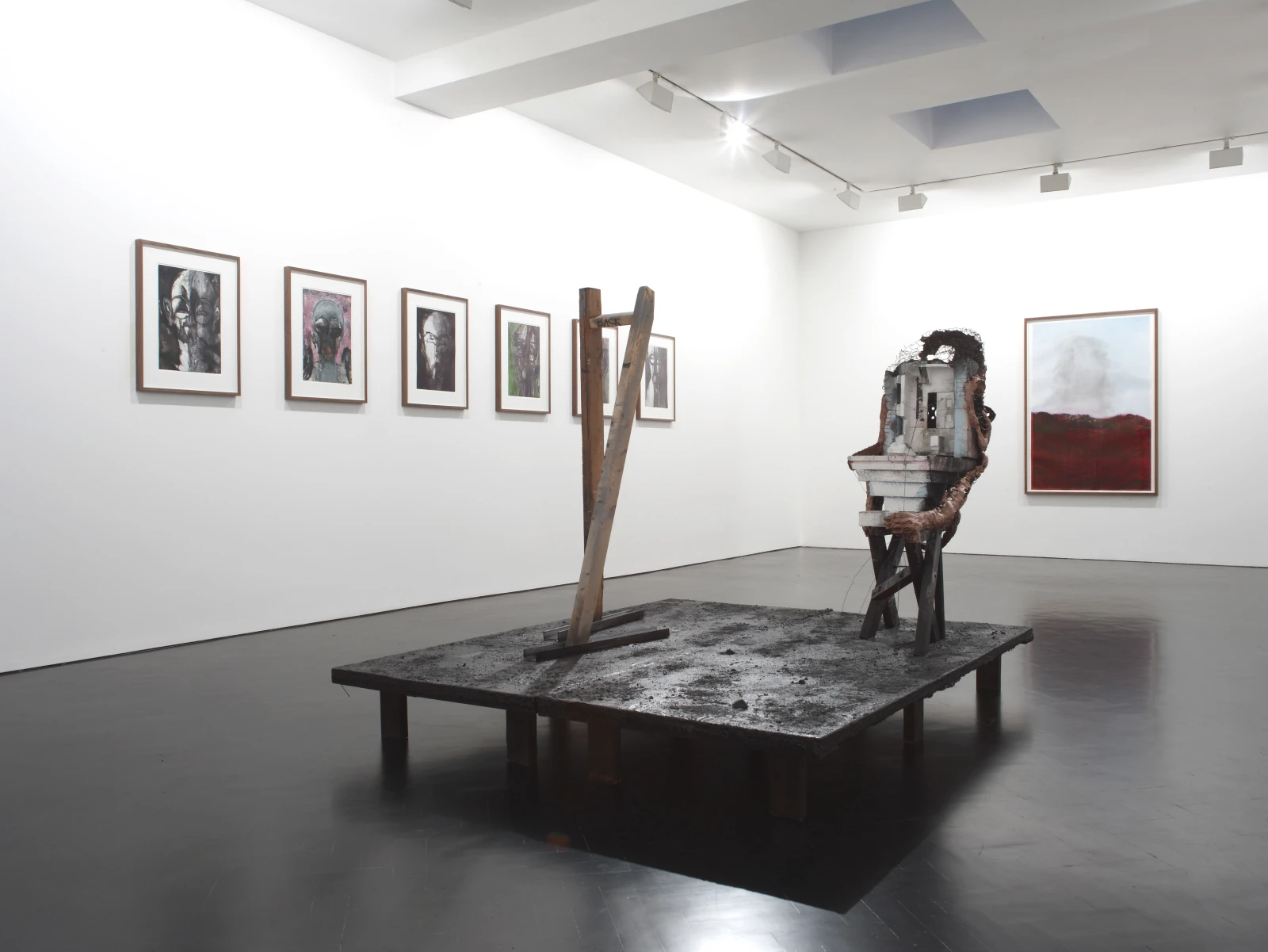
Huma Bhabha
Overview
Picasso-esque in form, these works blend figuration with a Modernist abstraction, producing a vibrant, enchanting effect.
Stephen Friedman Gallery is delighted to present its first ever exhibition of work by Huma Bhabha. This is the artist’s first solo exhibition in the UK and follows her highly praised commission for this year’s Whitney Biennial in New York. Running concurrently with this exhibition in London are two further solo presentations in New York City; at Salon 94 and Peter Blum Gallery. These three exhibitions offer an unprecedented opportunity to explore the work of this compelling artist in depth.
Huma Bhabha is a sculptor first and foremost. Her poetic assemblages are born out of tactile materials such as Styrofoam, air-dried clay, wire, cork and scraps of construction material. Often referred to as ‘post- apocalyptic’ in their aesthetic, these works combine figuration with abstract architectural elements and a sense of landscape.
Stephen Friedman Gallery is delighted to present its first ever exhibition of work by Huma Bhabha. This is the artist’s first solo exhibition in the UK and follows her highly praised commission for this year’s Whitney Biennial in New York. Running concurrently with this exhibition in London are two further solo presentations in New York City; at Salon 94 and Peter Blum Gallery. These three exhibitions offer an unprecedented opportunity to explore the work of this compelling artist in depth.
Huma Bhabha is a sculptor first and foremost. Her poetic assemblages are born out of tactile materials such as Styrofoam, air-dried clay, wire, cork and scraps of construction material. Often referred to as ‘post- apocalyptic’ in their aesthetic, these works combine
figuration with abstract architectural elements and a sense of landscape. Informed by a vast array of cultural references, from the cinematography of 1979 sci-fi classic “Stalker” to the architecture of Cambodia’s ancient temples at Angkor Wat, Bhabha’s work transcends a singular time and place. Instead, these strands come together in a highly personal exploration of what the artist describes as the ‘eternal concerns’ found across all cultures: war, colonialism, displacement and memories of home.
This exhibition debuts a new body of sculptural work, an installation and work on paper. The new figurative sculptures, shown in the front gallery space, are carved out of cork, and darkened in parts with black paint. They recall the stone sculptures of ancient civilisations: the Greek kouroi perhaps or the monumental representations of Egyptian pharaohs. There is an undoubted sense of the primordial here, yet the coarse, textured surface of the cork imbues the figures with a prickling sense of the kinetic. These tall, imposing figures, seemingly ready to step down from their plinths at a moment’s notice, echo the later work of Constantin Brancusi.
In contrast, the back gallery space contains an emblematic example of the artist’s work. ‘Bumps in the Road’ is an assemblage of two lone figures set amongst a forsaken landscape. Here, on a dark, soil-like and burnt out terrain, the figures stand, seemingly caught mid-stride. One is tall and lean, with little more than two conjoined pieces of wood on metal feet demarcating its existence. The other, a large clay and wire head from one angle; an example of urban decay from another, leans ever so slightly forward, aptly implying movement.
This alluring panoramic scene, which also uses rusted car parts, metal studs, sand and ash, begs to be viewed from all angles. Bhabha’s sculptural works each form a self-contained mise-en-scene, whose allure lies in their suggestion of narrative, place and person.
‘Bumps in the Road’ is shown alongside a selection of pastel drawings and photographs that have been overlaid with ink drawings. The pastel works on paper are largely comprised of portraits and articulate the artist’s painterly skill. Picasso-esque in form, these works blend figuration with a Modernist abstraction, producing a vibrant, enchanting effect. In the re-worked photographs, taken by Bhabha in her native Karachi in southern Pakistan, the artist undermines the documentary tradition with a darker, personal and often fantastical dimension.
Picasso-esque in form, these works blend figuration with a Modernist abstraction, producing a vibrant, enchanting effect.
Installation Views




